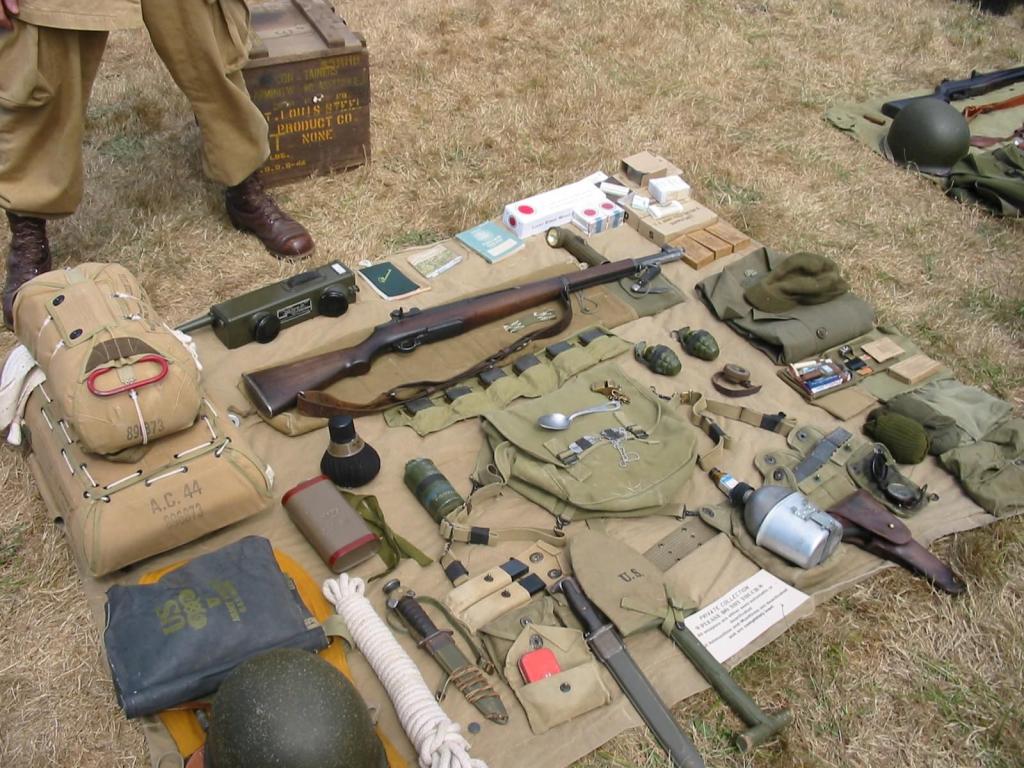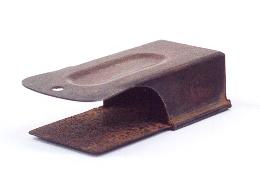-
Contributing Member


7 August 2024 Garand Picture of the Day

Any Idea of what the odd shaped container near the smoke grenade is?
He is no fool who gives what he cannot keep to gain that which he cannot lose
There are no great men, only great challenges that ordinary men are forced by circumstances to meet.
-
The Following 12 Members Say Thank You to Mark in Rochester For This Useful Post:
25-5,
42rocker,
Bill Hollinger,
Bob Womack,
fboyj,
fjruple,
frankderrico,
Jonzie,
Low & Slow,
Ovidio,
RAM1ALASKA
-
08-07-2024 09:52 AM
# ADS
Friends and Sponsors

-
Advisory Panel



Originally Posted by
Mark in Rochester

Any Idea of what the odd shaped container near the smoke grenade is?
Hawkins mine...or Hawkins Grenade. Or do you mean the black funnel, Gammon bomb or Gammon Grenade.
-
The Following 10 Members Say Thank You to browningautorifle For This Useful Post:
-
Contributing Member




THE STORY OF THE NO. 82 GRENADE (HAM BOMB) Hand grenades were used in various forms during the First World War (1914-1918), with some models achieving longer life decades later in World War II (1939-1945) . In addition to the World War I-era models still in circulation in the 1930s, there have also been some brand new designs - some with more specialized battlefield roles, such as the British "Golden Gate Bomb". The gun was officially named "No. 82 Grenade" and the main model used was "No. 82 Mk I". Introduced in May 1943 until the end of the war in 1945, it served under the British, Canadian
"Golden Gate Bomb". The gun was officially named "No. 82 Grenade" and the main model used was "No. 82 Mk I". Introduced in May 1943 until the end of the war in 1945, it served under the British, Canadian and American flags, and the weapon was usually issued to infantry special forces. The Gammon bomb was designed by Captain R.S. Gammon, who served in the British Army's 1st Parachute Regiment, established in 1941 to drop infantry from transport aircraft, usually behind enemy lines. So far, the service has released "Grenade, Hand, Anti-Tank 74" grenades (nicknamed "sticky bombs"), but these weapons can be quite lethal to operators and are less stable than regular hand grenades. So Golden Gate pursued a new design that eventually caught the interest of the British Army, hence the name for the new shell. The Gammon Bomb is a fairly simple and adaptable grenade that can be used for a variety of battlefield uses. The grenade has a hard rotating cap on top, and the main body part is a flexible "pocket". The pouch can be filled with explosives and debris to suit the role on the battlefield - anti-infantry, anti-tank, etc. A typical filler is Composition C, although the amount varies widely depending on the requirements. Once ready, the grenade can be thrown at the target area in the usual way. Like some other grenades in war, Gammon bombs are percussion detonated and do not rely on a delayed detonation effect. Therefore, the operator must be careful during the operation so as not to fall over the ensuing explosion due to improper operation. The cap on the head of the grenade was unscrewed and removed, revealing a length of tape (one end weighed with a lead ball) wrapped around the fuze. The operator must ensure that the length of tape does not loosen before the user discards the grenade at will. In flight, the tape came off its attachment, detaching a retaining pin in the process. The action results in a firing pin and detonator activation process that causes the grenade to detonate on impact, sending its explosive force and contents over a large radius. Ham bombs have proven very effective on the battlefield and are used wherever their explosive power is required. Operators certainly appreciate the customizability of the weapon's explosive nature and the ability to "build bombs" to suit specific mission objectives. Despite its usefulness in the field, the weapon was still a crude development at its core, and it was not widely used until World War II. By the 1950s, it was withdrawn from stock by public participants shortly after the conflict.
and American flags, and the weapon was usually issued to infantry special forces. The Gammon bomb was designed by Captain R.S. Gammon, who served in the British Army's 1st Parachute Regiment, established in 1941 to drop infantry from transport aircraft, usually behind enemy lines. So far, the service has released "Grenade, Hand, Anti-Tank 74" grenades (nicknamed "sticky bombs"), but these weapons can be quite lethal to operators and are less stable than regular hand grenades. So Golden Gate pursued a new design that eventually caught the interest of the British Army, hence the name for the new shell. The Gammon Bomb is a fairly simple and adaptable grenade that can be used for a variety of battlefield uses. The grenade has a hard rotating cap on top, and the main body part is a flexible "pocket". The pouch can be filled with explosives and debris to suit the role on the battlefield - anti-infantry, anti-tank, etc. A typical filler is Composition C, although the amount varies widely depending on the requirements. Once ready, the grenade can be thrown at the target area in the usual way. Like some other grenades in war, Gammon bombs are percussion detonated and do not rely on a delayed detonation effect. Therefore, the operator must be careful during the operation so as not to fall over the ensuing explosion due to improper operation. The cap on the head of the grenade was unscrewed and removed, revealing a length of tape (one end weighed with a lead ball) wrapped around the fuze. The operator must ensure that the length of tape does not loosen before the user discards the grenade at will. In flight, the tape came off its attachment, detaching a retaining pin in the process. The action results in a firing pin and detonator activation process that causes the grenade to detonate on impact, sending its explosive force and contents over a large radius. Ham bombs have proven very effective on the battlefield and are used wherever their explosive power is required. Operators certainly appreciate the customizability of the weapon's explosive nature and the ability to "build bombs" to suit specific mission objectives. Despite its usefulness in the field, the weapon was still a crude development at its core, and it was not widely used until World War II. By the 1950s, it was withdrawn from stock by public participants shortly after the conflict.
Source: No. 82 Grenade (Gammon Bomb): Photos, History, Specification
He is no fool who gives what he cannot keep to gain that which he cannot lose
There are no great men, only great challenges that ordinary men are forced by circumstances to meet.
-
The Following 10 Members Say Thank You to Mark in Rochester For This Useful Post:
-
Contributing Member


Could not find the "Cricket" noise maker if this is a kit make up of an 05/06/1944 paratrooper.
-
-
Contributing Member



Only the 101st Airborne Division was equipped with crickets, and only the paratroopers of the division received it as an endowment a few days before June 6, 1944. In addition to this means of recognition, a voice code was developed (valid during 24 hours following the start of operations): “Flash”, word to which it was necessary to answer “Thunder”. On the second day, the code became “Hustle”-“Along”. Other means of identification existed: smoke (colored or not), panels, light or flags.
D-Day cricket - 101st Airborne Division - Signaling clacker
He is no fool who gives what he cannot keep to gain that which he cannot lose
There are no great men, only great challenges that ordinary men are forced by circumstances to meet.
-
The Following 6 Members Say Thank You to Mark in Rochester For This Useful Post:
















 PM
PM











